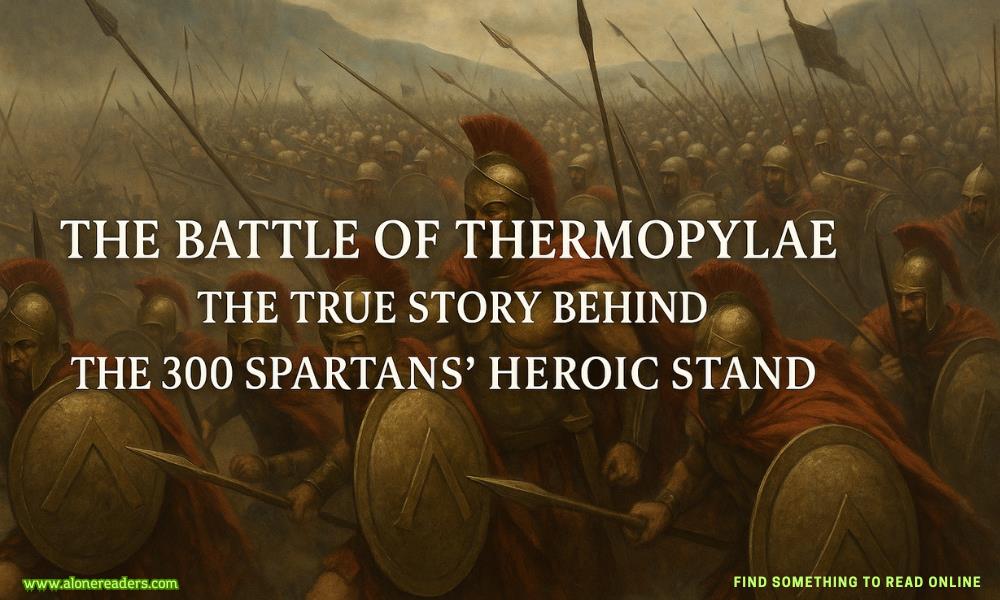
The Battle of Thermopylae, fought in 480 BCE during the second Persian invasion of Greece, stands as one of the most iconic last stands in military history. Immortalized in literature, film, and folklore, the story of 300 Spartans defending a narrow pass against the massive Persian army is often told with heroic exaggeration. Yet, beneath the mythology lies a real, complex event that reveals much about Greek warfare, Persian ambition, and the power of sacrifice.
Why Thermopylae Was Chosen
Thermopylae—meaning "Hot Gates"—was a narrow coastal pass in central Greece. It was the only land route large enough for an invading army to march from northern to southern Greece. The pass was flanked by mountains on one side and the sea on the other, making it an ideal choke point for defense. Greek forces, though heavily outnumbered, could use this geography to neutralize the numerical advantage of the invading Persian army.
The Timing and Persian Invasion
King Xerxes I of Persia had launched a massive campaign to conquer all of Greece, partly as revenge for his father Darius's defeat at Marathon a decade earlier. With an army reported by ancient sources to number between 100,000 to over a million (modern historians estimate around 100,000–150,000), Xerxes crossed the Hellespont and marched west. Greece, facing existential threat, chose Thermopylae and the naval straits of Artemisium as coordinated points of resistance.
The Hellenic League and the Role of Sparta
Though popularly remembered as 300 Spartans, the defending force at Thermopylae was a coalition of around 7,000 men from various Greek city-states, including Thespians, Thebans, Corinthians, and Arcadians. The Spartans, led by King Leonidas I, were appointed commanders due to their military reputation.
Why Only 300 Spartans?
Sparta’s reluctance to send its full army stemmed from the timing of the battle. The confrontation coincided with the sacred festival of Carneia, during which military operations were traditionally suspended. Nevertheless, Leonidas, with a personal guard of 300 hand-picked Spartans—all of whom had living sons to carry on their lineage—marched north, fully expecting to die.
Xerxes’ Army and Psychological Warfare
Xerxes’ forces were a multinational host, including Persians, Medes, Scythians, Egyptians, and others. His army was not just large but also well-equipped and organized. As a show of might, Xerxes waited four days after arriving at Thermopylae, expecting the Greeks to flee in terror. When they didn’t, he launched wave after wave of attacks.
Greek Phalanx vs. Persian Numbers
The Greeks used the phalanx formation—a tightly packed shield wall with overlapping spears. In the narrow pass, Persian cavalry and numbers were rendered ineffective. The Spartans and their allies fought in shifts, allowing for rest and maintaining defensive pressure. Their bronze armor and long spears gave them a tactical edge over the lightly armored Persian infantry.
Ephialtes and the Hidden Path
After two days of successful defense, a Greek traitor named Ephialtes approached Xerxes with a secret: there was a mountain path called Anopaia that bypassed the Greek position. He led the Persians through this route, enabling them to encircle the defenders.
Leonidas’ Decision to Stay
Realizing they were surrounded, Leonidas ordered the majority of the Greek forces to retreat. He stayed behind with his 300 Spartans, 700 Thespians (who refused to leave), and about 400 Thebans (whose loyalty was uncertain). Their sacrifice would serve both tactical and symbolic purposes—delaying the Persians and inspiring unity across Greece.
Fighting to the Last Breath
The final day saw brutal hand-to-hand combat. The Greeks, exhausted and running low on weapons, fought with swords, daggers, and even bare hands. Leonidas was killed early in the fight, and his body became a focal point of desperate defense. Eventually, the remaining fighters were overwhelmed and killed.
Desecration and Honor
Xerxes ordered Leonidas’ head to be cut off and his body crucified, a rare act of disrespect from the Persians, who usually honored brave enemies. This was likely a reaction to the humiliation inflicted by the Greek resistance and the psychological impact of their courage.
Military and Strategic Impact
Although a tactical defeat, the battle had strategic significance. It delayed the Persian advance and bought time for other Greek city-states to mobilize. At the naval Battle of Salamis shortly afterward, the Greeks won a decisive victory, marking a turning point in the war.
Birth of a Legend
Thermopylae became a symbol of courage against overwhelming odds. The story of Leonidas and his 300 warriors was passed down not just in Greece but became a global reference point for resistance, valor, and patriotism.
Inspiration Across Centuries
From Renaissance philosophers to modern filmmakers, Thermopylae has inspired countless retellings. The idea that a small group of elite warriors could challenge an empire resonates deeply in the human imagination. But beyond the romanticism lies a historical truth: the Greek stand at Thermopylae was a calculated, deliberate act of resistance, grounded in strategic thinking and fueled by a fierce sense of freedom.
More Than Just Spartans
Popular culture often erases the contributions of other Greek city-states, especially the Thespians who died alongside the Spartans. Thermopylae was not just a Spartan affair—it was a Hellenic effort.
Numbers and Myth
Ancient historians like Herodotus exaggerated Persian numbers, sometimes claiming millions. While these are considered inaccurate by modern standards, they do reflect how monumental the Greek resistance seemed to contemporaries.
Leonidas’ Intentions
Leonidas did not expect victory. His stand was meant to inspire and delay, not defeat the Persians outright. He likely understood that their sacrifice would become a rallying cry for all of Greece—and it did.